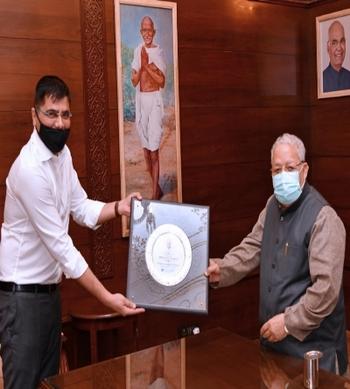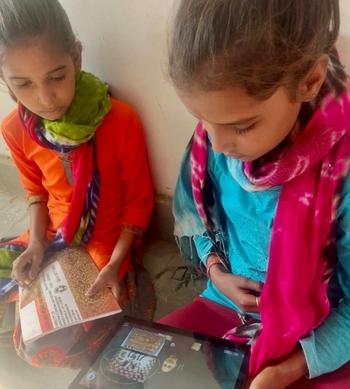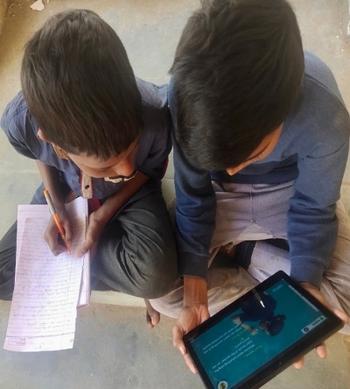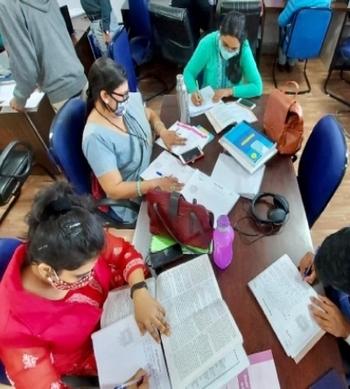CBSE Class 12 History Syllabus for 2023
CBSE Class 12 History Syllabus 2024: The Central Board of Secondary Education has issued the curriculum for the 12th class History (code number 027) for the academic year 2023-2024. Students studying the Humanities/Arts stream through the CBSE Board can view the entire syllabus here. The CBSE Class 12 History Syllabus 2023-24 PDF comprises the course structure, unit-wise course content, internal assessment data, list of map works, question paper design, and project work details.
|
No |
Part |
Marks |
|
1 |
Themes in Indian History Part--I |
25 |
|
2 |
Themes in Indian History Part--II |
25 |
|
3 |
Themes in Indian History Part--III |
25 |
|
4 |
Map |
05 |
|
TOTAL |
80
|
Skip to
Download CBSE Class 12 History Syllabus
|
Themes in Indian History Part—I 25 Marks |
||
|
Theme No. |
Theme Title |
Marks |
|
1 |
Bricks, Beads and Bones The Harappa Civilisation |
25 |
|
2 |
Kings, Farmers and Towns Early States and Economies (c.600 BCE600 CE) |
|
|
3 |
Kingship, Caste and class Early Societies (c. 600 BCE600 CE) |
|
|
4 |
Thinkers, Beliefs and Buildings Cultural Developments (c. 600 BCE600 CE) |
|
|
Themes in Indian History Part—II 25 Marks |
||
|
5 |
Through the eyes of Travellers Perceptions of Society (c. tenth to seventeenth centuries) |
25 |
|
6 |
Bhakti-Sufi Traditions Changes in Religious Beliefs and Devotional Texts (c. eighth to eighteenth centuries) |
|
|
7 |
An Imperial Capital – Vijayanagar (c. fourteenth to sixteenth centuries) |
|
|
8 |
Peasants, zamindars and the States Agrarian Society and the Mughal Empire (c. sixteenth-seventeenth centuries) |
|
|
Themes in Indian History Part—III 25 Marks |
||
|
9 |
Colonialism and The Countryside Exploring Official Archives |
25 |
|
10 |
Rebels and Raj 1857 Revolt and its Representations |
|
|
11 |
Mahatma Gandhi and the National Movement Civil Disobedience and Beyond |
|
|
12 |
Framing of the Constitution The Beginning of a New Era |
|
|
Including Map work of the related Themes |
05 |
|
|
Theory Total |
80 |
|
|
Project Work |
20 |
|
|
100 |
||
CBSE Class 12 History Syllabus 2023-24: Course Content
|
Theme No. and Title |
Learning outcome with specific competencies |
|
Themes in Indian History Part—I |
|
|
1.BRICKS, BEADS AND BONES The Harappan Civilisation |
To investigate, explore and interpret the early urban centres and social institutions. State and deduce the multi- lateral aspects of Harappan civilization to understand the first civilization of the world. Investigate and interpret historical and contemporary sources and viewpoints of ASI and historians on Harappa. |
|
2.KINGS, FARMERS AND TOWNS: Early States andEconomies (c.600 BCE 600 CE) |
To critically evaluate and interpret major trends in the political and economic history of the subcontinent. Decode inscriptional evidence. Analyse inscriptional evidences and the ways in which these have shaped the understanding of political and economic processes |
|
3.KINSHIP, CASTE AND CLASS, Early Societies (c. 600 BCE600 CE) |
To examine, analyse the issues of social history. Analyse social norms in order to understand the perspectives of society given in the scriptures of ancient India. Examine the varied dimensions explored by historians in order to understand the dynamic approach of Mahabharata.. |
|
4.THINKERS, BELIEFS AND BUILDINGS Cultural Development (c. 600 BCE600 CE) |
To infer and compare the major religious developments in early India. Elucidate the rich religious sculpture and infer the stories hidden in it. |
|
To create a picture album of the Buddhist sculpture |
|
|
Themes in Indian History Part—II |
|
|
5.THROUGH THE EYES OF TRAVELLERS Perceptions of Society (c. tenth to seventeenth centuries) |
To understand salient features of social histories described by the travellers and apply the learning in real life. Elucidating the accounts of foreign travellers in order to understand the social political and economic life during the tenure of different rulers in the medieval period. Compare and contrast the perspectives of Al Biruni, Ibn Battuta and Bernier towards Indian society. |
|
6.BHAKTI –SUFI TRADITIONS Changes in Religious Beliefs and Devotional Texts (c. eighth to eighteenth centuries) |
Understand the religious developments. Summarize the philosophies of different Bhakti and SufI saints to understand the religious developments during medieval period. Comprehend the religious movement in order to establish unity, peace harmony and brotherhood in society |
|
7.AN IMPERIAL CAPITAL: VIJAYANAGARA (c. fourteenth to sixteenth centuries |
Students will be able to Classify the distinctive architectural contributions of the Vijayanagar empire to comprehend the richness of mingled cultures of deccan India. Analyse accounts of foreign traveller’s on Vijayanagar in order to interpret political, social and cultural life of the city. Assess and appreciate the city planning, water management system, administration of the rulers |
|
8.PEASANTS, ZAMINDARS AND THE STATE Agrarian Society and the Mughal Empire (c. sixteenth seventeenth centuries) |
Comprehend the facets of agrarian developments in order to understand the relationship between the state and the agriculture during Mughal period. Compare and contrast the agrarian changes occurred during sixteenth and seventeenth centuries. Make a table and bring out the differences in the agrarian sector. |
|
Themes in Indian History Part—III |
|
|
09.COLONIALISM AND THE COUNTRYSIDE Exploring Official Archives |
Evaluate the revenue systems introduced by the British to understand the economic aspects of colonization in India. Analyse the colonial official records & reports to understand the divergent interest of British and Indians. Find solution to be taken to protect the peasants and artisans in this century |
|
10.REBELS AND THE RAJ: 1857 Revolt and its Representations |
To examine the events of 1857. Correlate the Planning and coordination of the rebels of 1857 to infer its domains and nature. Examine the momentum of the revolt to understand its spread. Analyse how revolt created vision of unity amongst Indians. Interpret visual images to understand the emotions portrayed by the nationalist and British. |
|
11.MAHATMA GANDHI AND THE NATIONALIST MOVEMENT Civil Disobedience and Beyond |
Understand the nationalist movement in chronological order. Correlate the significant elements of the nationalist movement and the nature of ideas, individuals, and institutions under the Gandhian leadership. Debate on the significant contributions of Gandhi to understand his mass appeal for nationalism. Explore the ways of interpreting historical source such as newspapers, biographies and auto- biographies diaries and letters |
|
12.FRAMING THE CONSTITUTION The Beginning of a New Era |
Highlight the role of Constituent Assembly to understand functionaries in framing the constitution of India. Analyse how debates and discussions around important issues in the Constituent Assembly shaped our Constitution |
Conclusion
In conclusion, Class 12th CBSE History is a crucial subject that helps students to understand the historical, social, cultural, and political developments in India and the world. By studying the different themes covered in the curriculum, students can gain a comprehensive understanding of India's rich and diverse history and its impact on the world. They can also develop critical thinking and analytical skills by evaluating different historical sources and interpretations.
FAQs
1.What are the main themes covered in Class 12th CBSE History?
Class 12th CBSE History covers five main themes: "Bricks, Beads, and Bones", "Kings, Farmers, and Towns", "Kinship, Caste, and Class", "Thinkers, Beliefs, and Buildings", and "Through the Eyes of Travellers". These themes cover the history of India from the ancient times to the modern era.
2.What are the benefits of studying Class 12th CBSE History?
Studying Class 12th CBSE History can provide students with a comprehensive understanding of India's rich and diverse history and its impact on the world. It can also develop critical thinking and analytical skills by evaluating different historical sources and interpretations. Additionally, knowledge and skills gained through studying history can prepare students for various careers such as teaching, research, journalism, law, and public service.
3.What is the exam pattern for Class 12th CBSE History?
Class 12th CBSE History exam is conducted for 80 marks, out of which 20 marks are reserved for internal assessment. The exam consists of 3 hours duration and includes a mix of objective and subjective type questions.
4.What are the career options after studying Class 12th CBSE History?
Some of the career options after studying Class 12th CBSE History include teaching, research, journalism, law, public service, museum curation, and cultural preservation.
Download CBSE Class 12 History Syllabus Pdf

MissionGyan Team
We aim to eradicate the education gap and serve equal and free education to all with the help of skilled and expert volunteers and teachers.





